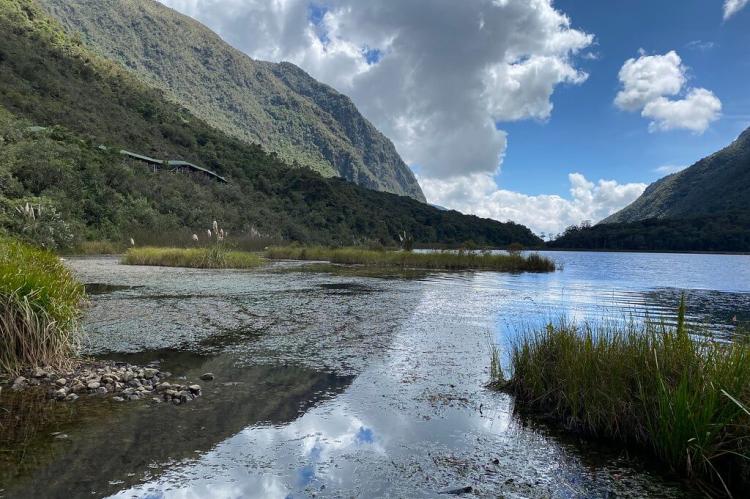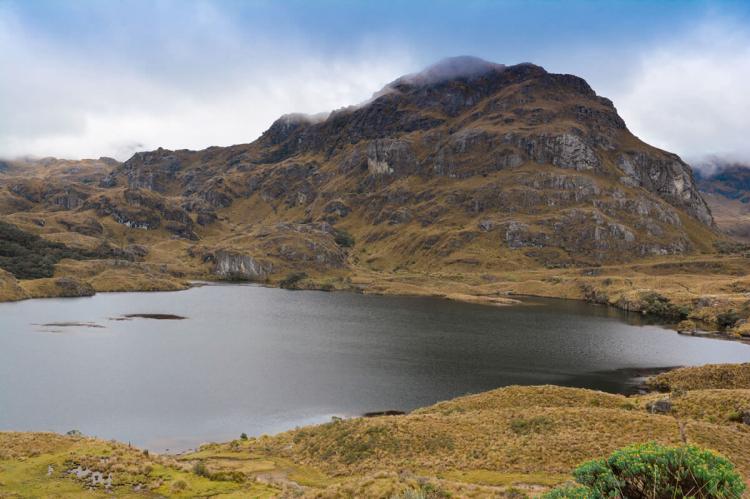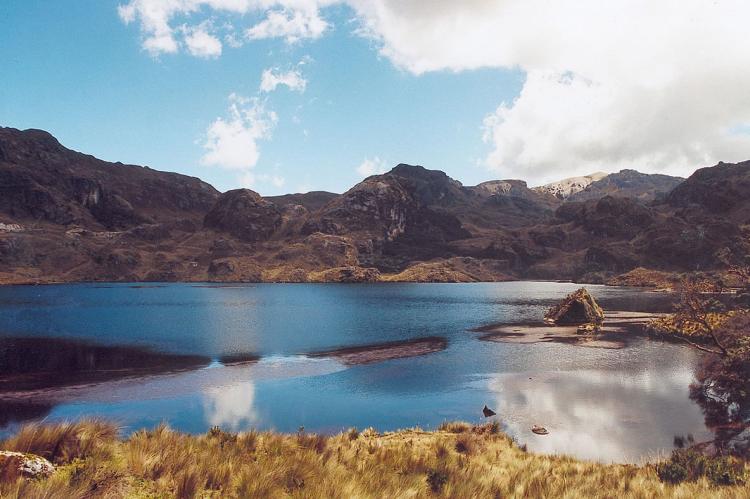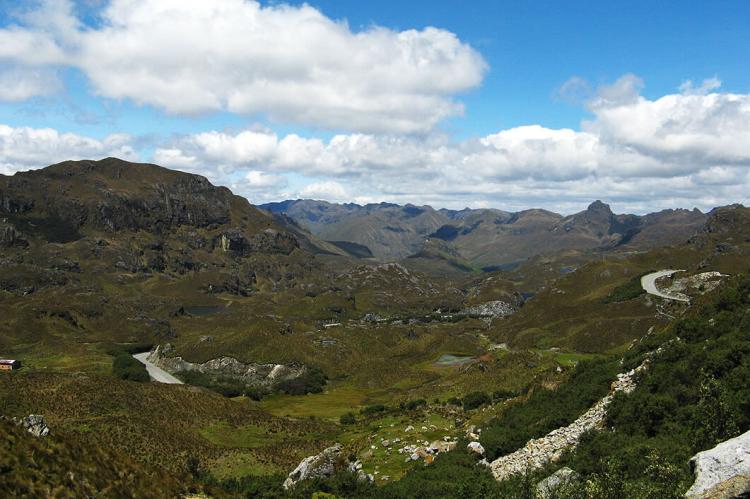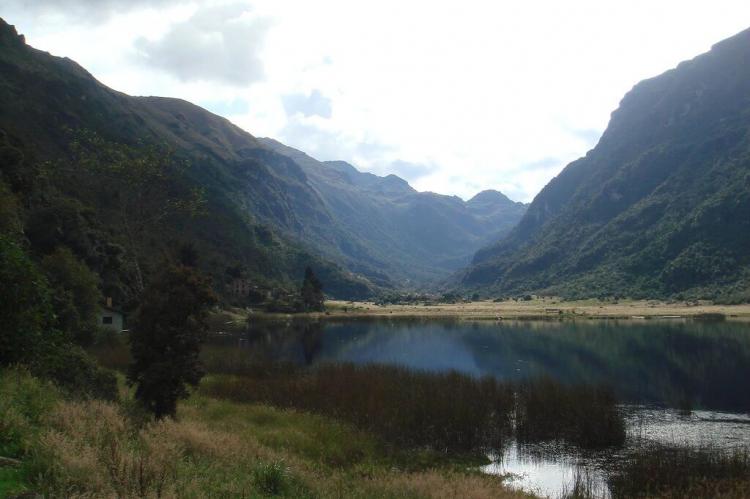El Cajas National Park: Ecuador's Highland Haven of Biodiversity
El Cajas National Park in southern Ecuador is known for its high-altitude ecosystems, stunning landscapes, and diverse wildlife. The rugged terrain features a unique geomorphology with a myriad of lakes and lagoons, making it an important ecological and hydrological treasure.
Highland Ecosystems and Ancient Roads: Exploring El Cajas National Park
Nestled in southern Ecuador's Azuay province, west of Cuenca, El Cajas National Park is a remarkable natural reserve encompassing 28,544 hectares (70,500 acres). This park, a part of the Macizo del Cajas Biosphere Reserve, is renowned for its unique high-altitude ecosystems, breathtaking landscapes, and rich biodiversity. The jagged terrain, characterized by a distinctive knob and kettle geomorphology, hosts approximately 270 lakes and lagoons amidst its páramo (highland) vegetation, making it a vital ecological and hydrological treasure.
Geographical Features and Climate
Terrain and Hydrology
El Cajas National Park boasts a dramatic landscape marked by hills, valleys, and large bedrock outcrops. The park's intricate network of lakes and lagoons, formed by its unique geomorphology, is striking. Two of Cuenca's main rivers, the Tomebamba and Yanuncay, originate in the park, eventually flowing into the Amazon River. Additionally, the Paute River also contributes to the Amazon basin. On the western side of the Continental Divide, the Balao and Cañar rivers drain into the Pacific Ocean. This diverse drainage system highlights the park's crucial role in regional water dynamics.
Climate
The park's high-altitude location results in a unique climate characterized by low temperatures, high humidity, and low atmospheric pressure. These conditions create an environment where organic material accumulates in the soil, enhancing its water retention capacity. The park's climate and varied topography support a wide range of ecosystems, from high grasslands to cloud forests.
Historical and Cultural Significance
The Qhapaq Ñan, the ancient Inca road system, traverses El Cajas National Park. This road, linking Tomebamba with "Tambo de Paredones" (Molleturo), was a crucial route between the highlands and the coast. The modern road crosses the Continental Divide at the "Tres Cruces" pass, the westernmost part of South America's continental divide. The park's highest peak, Cerro Arquitectos, rises to 4,450 meters (14,600 feet), with roads reaching elevations over 4,310 meters (13,550 feet).
Flora and Fauna
Vegetation
El Cajas National Park is home to a wide variety of plant species, many uniquely adapted to the high-altitude páramo ecosystem. The dominant vegetation includes straw grass (Calamagrostis intermedia) and Polylepis forests, commonly known as 'paper trees.' These forests, located above 3,300 meters (10,800 feet), provide habitat for rare and endemic species, such as the Fuchsia campii. Lower elevations in the park feature cloud forests and perennial high mountain forests, particularly in ravines and along watercourses.
Wildlife
The park's diverse habitats support a wide range of wildlife, including many endemic and endangered species. Notable avian species include the South American condor, with only about 80 individuals remaining in Ecuador, the curiquinga (a large black and white raptor), and the giant hummingbird (Patagona gigas), the world's largest hummingbird. The violet-throated metaltail (Metalura gorjivioleta), endemic to El Cajas and surrounding valleys, is another significant bird species in the park.
El Cajas is also home to 44 mammalian species, including opossums, various cats and bats, pumas, coatis, weasels, skunks, foxes, porcupines, pacas, shrews, rabbits, and other rodents. Endemic species such as the Cajas water mouse (Chibchanomys orcesi) and Tate's shrew opossum (Caenolestes tatei) add to the park's biodiversity. Additionally, at least 17 amphibian species, including those from the genera Atelopus, Telmatobius, Gastrotheca, Eleutherodactylus, and Colostethus, thrive around the park's numerous lagoons, indicating a healthy insect population.
Conservation Efforts
El Cajas National Park's designation as part of the Macizo del Cajas Biosphere Reserve underscores its importance for conservation. Efforts to preserve its unique ecosystems include habitat protection, species monitoring, and research initiatives to understand and mitigate the impacts of climate change and human activities. These efforts are crucial for maintaining the park's ecological integrity and ensuring the survival of its diverse flora and fauna.
Socio-Economic Impact
Ecotourism and Local Communities
El Cajas National Park plays a vital role in the local economy through ecotourism. The park's stunning landscapes, rich biodiversity, and historical significance attract visitors worldwide, providing economic opportunities for local communities. Ecotourism initiatives focus on sustainable practices that minimize environmental impact while maximizing resident benefits. These efforts help raise awareness about the importance of conservation and promote the sustainable use of natural resources.
Conclusion
El Cajas National Park is a jewel of southern Ecuador, offering a unique blend of high-altitude ecosystems, rich biodiversity, and historical significance. Its varied landscapes, from jagged hills and valleys to serene lakes and lagoons, provide a haven for numerous endemic and endangered species. The park's role in regional water dynamics, cultural heritage, and socio-economic impact underscores its importance as a conservation priority. By preserving this natural treasure, Ecuador protects its ecological heritage and promotes sustainable development and environmental stewardship.
